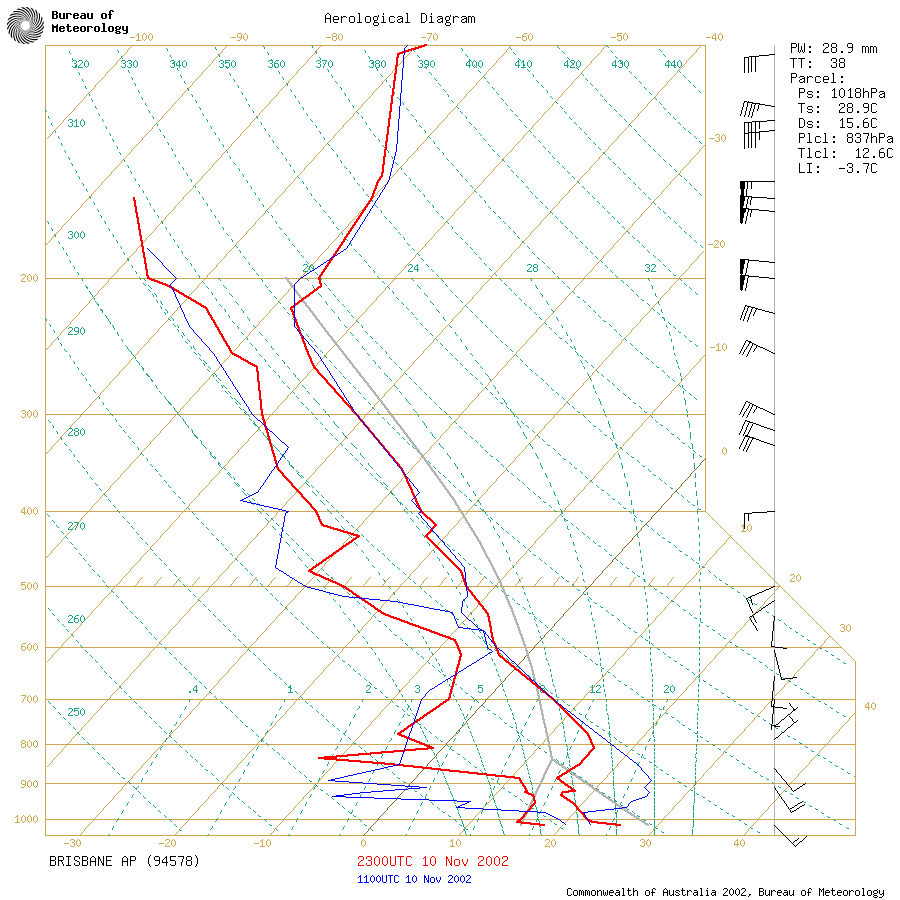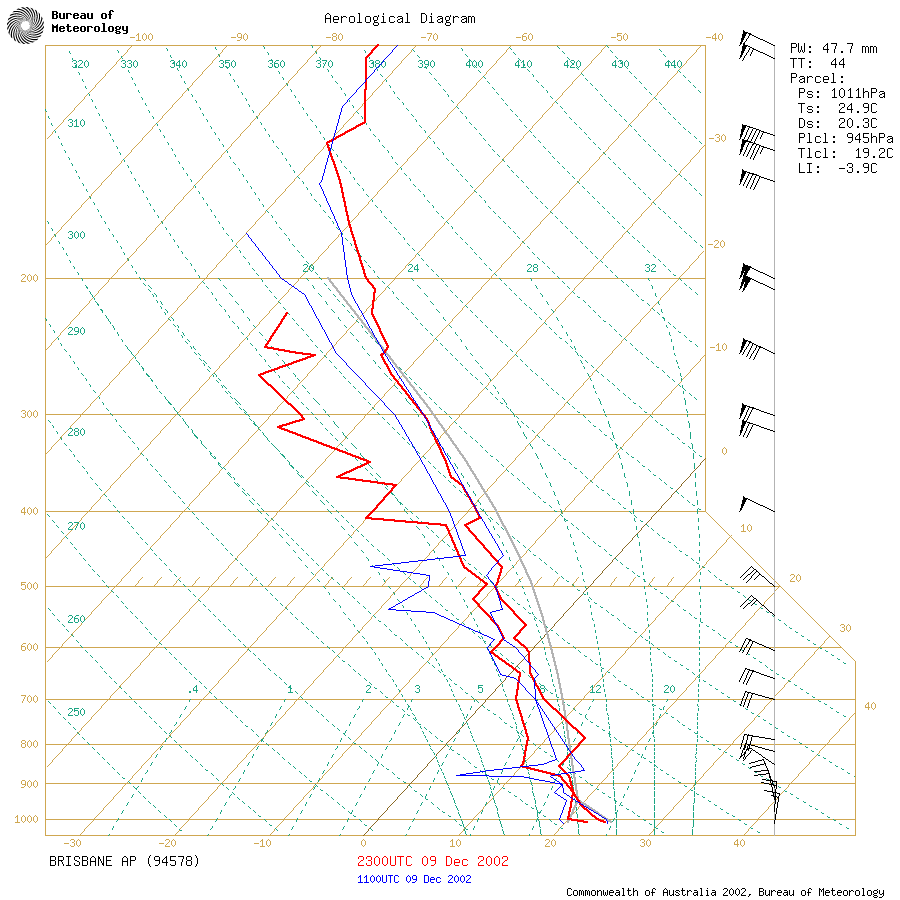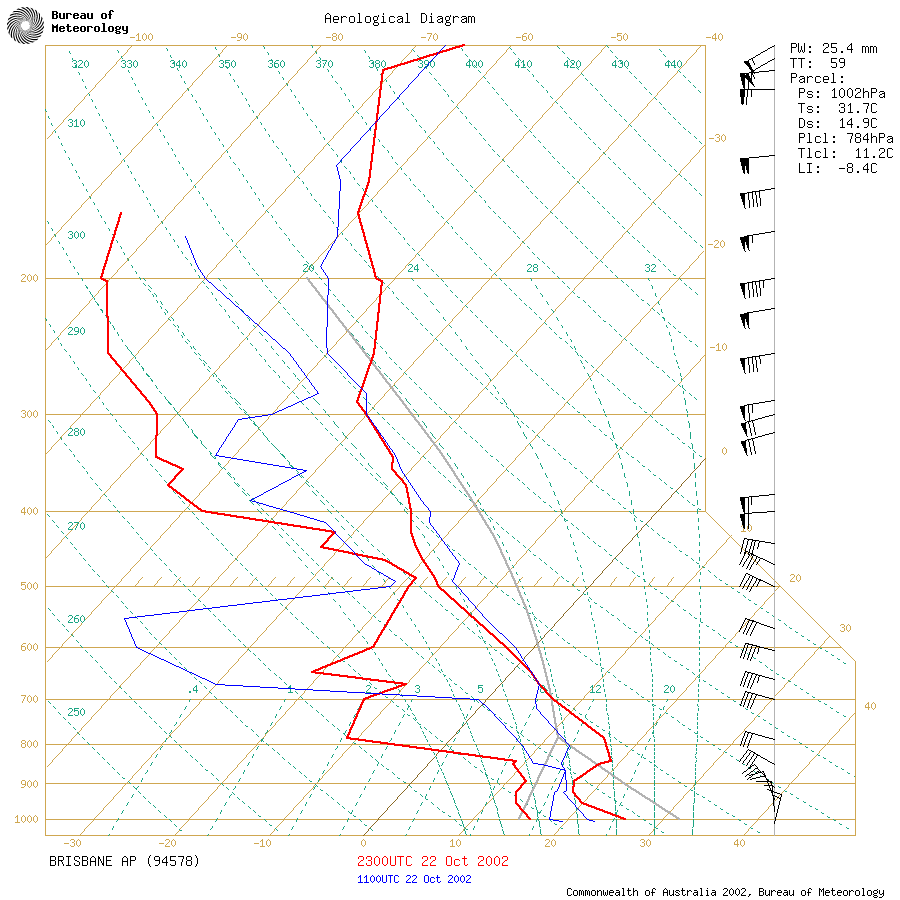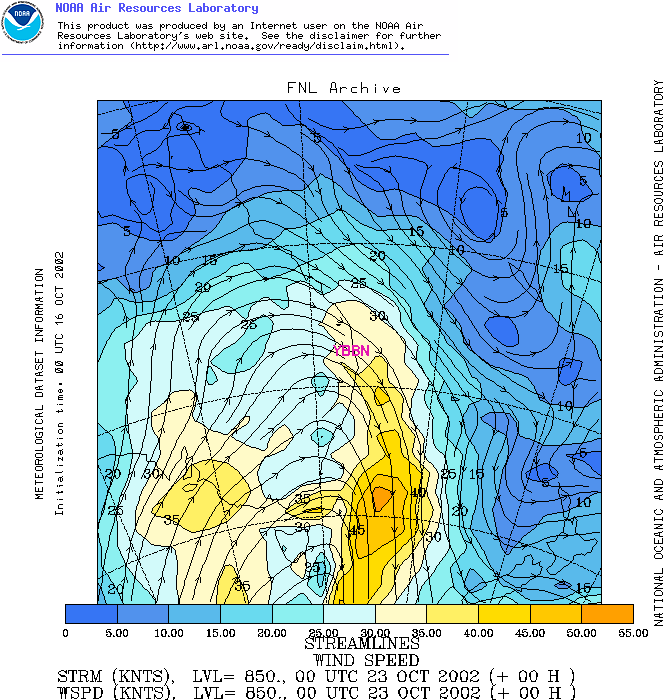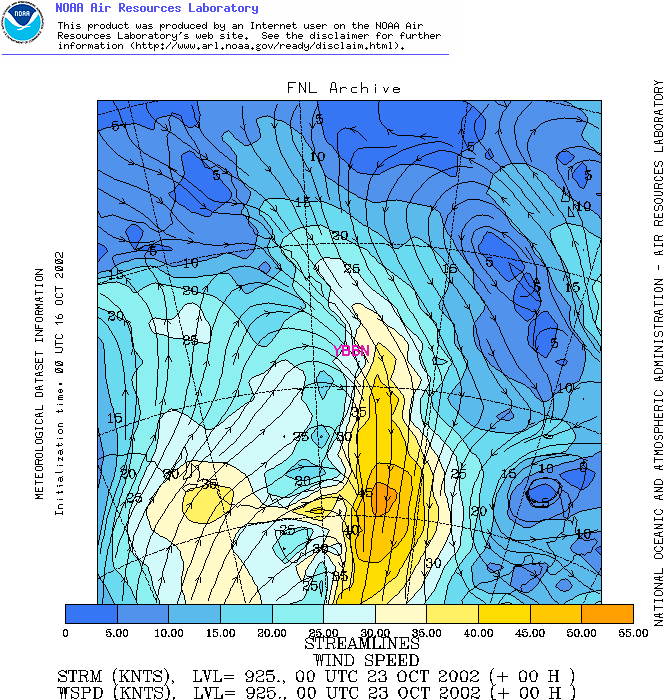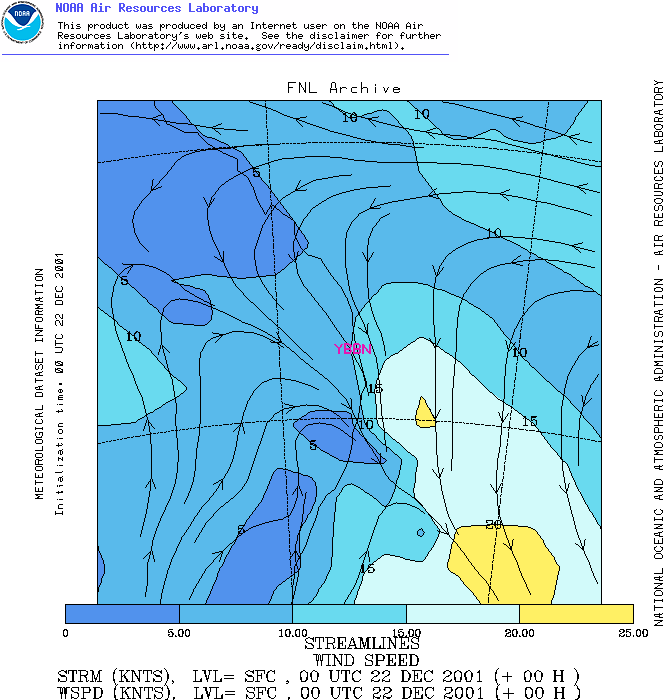| Here we have a sounding on the morning of
November
11. There is a fair bit of instability if it reaches close to
30 degrees with a DP of around 16C. (Notice that in this example
that a DP drier than the surface was chosen? I'll explain why that's
the case soon - but it's to do with averaging the low level moisture).
The problem is that there is a massive cap! Unfortunately on this
day, while it actually got into the low 30s on some of the plains of the
SE Coast region, nothing happened. In fact, one storm that did move
into the region died as it came off the ranges. If you're not familiar
with the topography of SE QLD (where I live), then here's a quick run down.
SE QLD is surrounded by ranges to the south and to the west. Ranges
to the south are along the border of NSW and QLD and get up to 1300m.
Ranges to the SW get up to 1200m and to the west they get up to 800m.
To the west is what is referred to as the "Darling Downs" - a large farming
region that goes several hundred kilometres inland. The Downs is
one of my favourite playgrounds - not just because it's flat and few trees
either! But because it's elevated, in fact most of the Downs is around
500m high!
So what's so important about height?
Well - what happens as you ascend? The pressure drops! In the
bottom 1-2km, the pressure drops at approximately 1hPa every 10m.
So say the pressure is 1000hPa at the surface, if you ascend 100m then
the pressure is now 990hPa. If you ascend 500m the pressure is 950hPa
and if you ascend 1000m the pressure is 900hPa. Remember how we used
Normand's Theorem to plot our Skew-T, and we started at the surface?
Normally the surface is taken to be around 1000hPa, but what if it were
say 950hPa? We would then have to plot our temperature and dewpoint
commencing from the 950hPa level! Normally as you ascend, the temperature
and dewpoint decrease (in fact, this should be at around 1C/100m), but
that isn't actually the case over land! For instance, at an elevation
of 600m, about 20km south of Toowoomba on November 11, I measured a temperature
of 29 degrees. The sea level pressure at the time was around 1010hPa,
which meant the actual pressure I was experiencing was around 950hPa.
The dewpoint was hovering around 15-16C. Essentially, at 600m it
was the same temperature and dewpoint as plotted at 0m (sea level) on the
above Skew-T. So we're going to get a good idea on how increasing
the altitude can really help increase the instability!

Here we are with our new plot, plotted at 600m
(or in this case 950hPa), look how much more instability we have!
Just going by LIs along we've gone from -4 to -7! That cap has weakened
a lot too, much more breakable then before. I've also drawn (well
attempted, it didn't work too well) to draw in some dashed lines from 950hPa
to 1010hPa to illustrate the equivalent surface potential. Had I
had a steady hand, you would see that the surface potential of 29C at 600m
is around 35C! (ie 1C per 100m), and the DP ended up being around
17C from 15C. So you can clearly see here how elevated heating increases
the instability and can also help to break the caps. This is a major
thing to realise if you're chasing say on the Tablelands (large areas over
1000m) or the slopes and plains that lie to the west of these areas.
So what happened on this day? A storm I chased gave cricket ball
hail and severe winds that destroyed several sheds and barns. I missed
the hail (fortunately!) There were some even stronger storms in the
northern Downs but few people live there. Check the chase
report anyway if you're interested!
This also brings about "pressure heating."
Think about it if the pressure is 1000hPa vs 1020hPa. For every 10hPa
higher that the pressure is over your area, then that's the equivalent
of 1C cooler when you look at it in terms of instability potential.
This is another reason why lower pressure is good - winter storms can struggle
because the pressure can be in excess of 1020hPa - that means that it is
effectively 2C cooler at the surface already then the same situation in
summer at 1000hPa (even ignoring the summer/winter temperature differences).
So areas of low pressure also help increase the instability - while areas
of high pressure decrease it. Not to mention the fact the areas of
low pressure often have already rising air and areas of high pressure have
sinking air which surpresses updrafts.
I mentioned that the BoM often takes an average
of the surface moisture - in fact, a lot of sites that plot soundings do
this. There is a good reason for this, it's to do with mixing during
the day. Lets think about our convective process. The initial
convective process occurs in rolls, in lower 1-2km of the atmosphere you
tend to have air rise from heating, and then cooler air around it sinks.
This cooler air is then heated in the lower atmosphere by the sun and the
ground. Already we can see two things here! Our convective
"roll" will not go past the initial cap, so if the cap is say at around
2km, then our convective roll won't go past 2km and then all our heat energy
is "trapped" underneath the cap. If there is a weaker cap, then a
lot of our heat energy can escape into the upper atmosphere as convective
clouds - not what we want if we want stronger thunderstorms.
The other thing we can see is, if the surrounding
air in the lower atmosphere is dry - what is going to happen when it mixes
in the surrounding air? For instance, lets say there is a DP of 20C
at the surface - lovely and moist! But 500m up the DP is only 10C,
then that dry air will eventually mix down towards the surface and give
a combined DP much lower than 20C! So our convective potential is
subsequently diminished. Lets look at some more examples. Here
is an example of what I call very shallow moisture:
|


